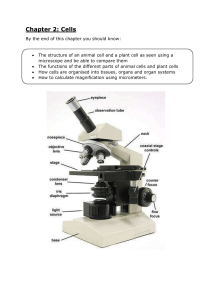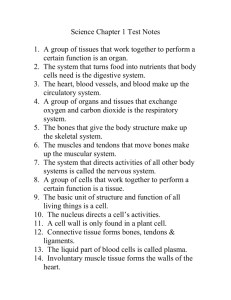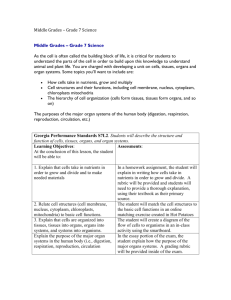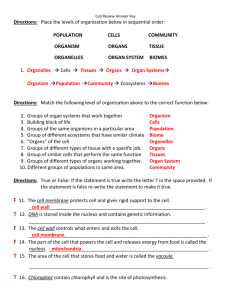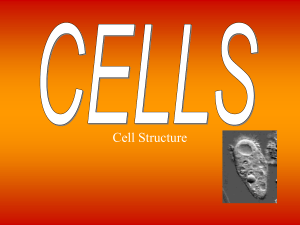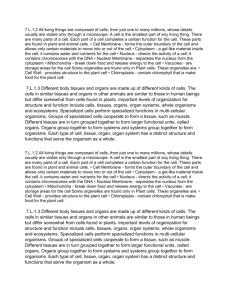2. Cells, tissues
advertisement
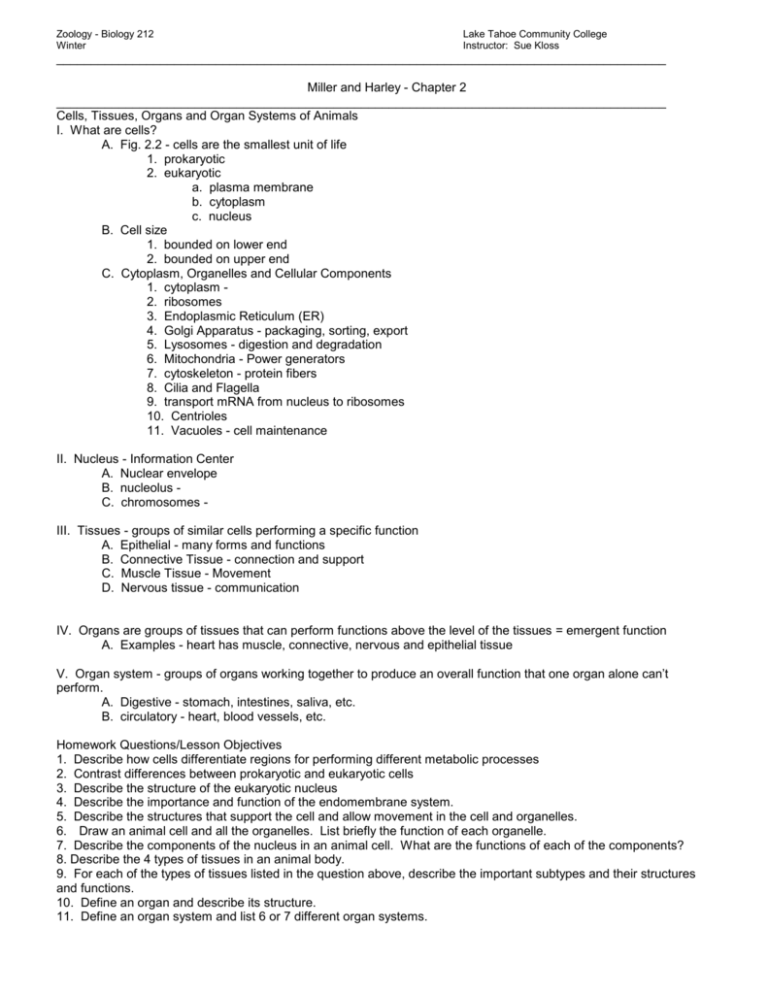
Zoology - Biology 212 Winter Lake Tahoe Community College Instructor: Sue Kloss ________________________________________________________________________________________ Miller and Harley - Chapter 2 ________________________________________________________________________________________ Cells, Tissues, Organs and Organ Systems of Animals I. What are cells? A. Fig. 2.2 - cells are the smallest unit of life 1. prokaryotic 2. eukaryotic a. plasma membrane b. cytoplasm c. nucleus B. Cell size 1. bounded on lower end 2. bounded on upper end C. Cytoplasm, Organelles and Cellular Components 1. cytoplasm 2. ribosomes 3. Endoplasmic Reticulum (ER) 4. Golgi Apparatus - packaging, sorting, export 5. Lysosomes - digestion and degradation 6. Mitochondria - Power generators 7. cytoskeleton - protein fibers 8. Cilia and Flagella 9. transport mRNA from nucleus to ribosomes 10. Centrioles 11. Vacuoles - cell maintenance II. Nucleus - Information Center A. Nuclear envelope B. nucleolus C. chromosomes III. Tissues - groups of similar cells performing a specific function A. Epithelial - many forms and functions B. Connective Tissue - connection and support C. Muscle Tissue - Movement D. Nervous tissue - communication IV. Organs are groups of tissues that can perform functions above the level of the tissues = emergent function A. Examples - heart has muscle, connective, nervous and epithelial tissue V. Organ system - groups of organs working together to produce an overall function that one organ alone can’t perform. A. Digestive - stomach, intestines, saliva, etc. B. circulatory - heart, blood vessels, etc. Homework Questions/Lesson Objectives 1. Describe how cells differentiate regions for performing different metabolic processes 2. Contrast differences between prokaryotic and eukaryotic cells 3. Describe the structure of the eukaryotic nucleus 4. Describe the importance and function of the endomembrane system. 5. Describe the structures that support the cell and allow movement in the cell and organelles. 6. Draw an animal cell and all the organelles. List briefly the function of each organelle. 7. Describe the components of the nucleus in an animal cell. What are the functions of each of the components? 8. Describe the 4 types of tissues in an animal body. 9. For each of the types of tissues listed in the question above, describe the important subtypes and their structures and functions. 10. Define an organ and describe its structure. 11. Define an organ system and list 6 or 7 different organ systems.
